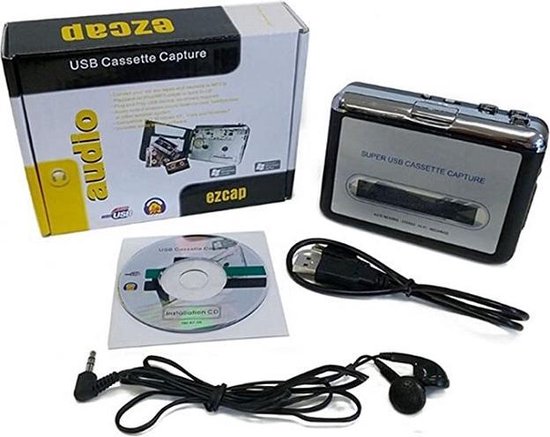
Listening Library was also a pioneering company, it was one of the first to distribute children's audiobooks to schools, libraries and other special markets, including VA hospitals. Caedmon used LP records, invented in 1948, which made longer recordings more affordable and practical, however most of their works were poems, plays and other short works, not unabridged books due to the LP's limitation of about a 45-minute playing time (combined sides). The original 1952 recording was a selection for the 2008 United States National Recording Registry, stating it is "credited with launching the audiobook industry in the United States". The LP's B-side contained A Child's Christmas in Wales which was added as an afterthought - the story was obscure and Thomas himself couldn't remember its title when asked what to use to fill up the B-side - but this recording went on to become one of his most loved works, and launched Caedmon into a successful company. Their first release was a collection of poems by Dylan Thomas as read by the author. Caedmon was formed in New York in 1952 by college graduates Barbara Holdridge and Marianne Roney. In 1952, Macdonald established recording studios in seven additional cities across the United States.Ĭaedmon Records was a pioneer in the audiobook business, it was the first company dedicated to selling spoken work recordings to the public and has been called the "seed" of the audiobook industry.

Members of the Auxiliary transformed the attic of the New York Public Library into a studio, recording textbooks using then state-of-the-art six-inch vinyl SoundScriber phonograph discs that played approximately 12 minutes of material per side. Macdonald mobilized the women of the Auxiliary under the motto "Education is a right, not a privilege".

The newly passed GI Bill of Rights guaranteed a college education to all veterans, but texts were mostly inaccessible to the recently blinded veterans, who did not read Braille and had little access to live readers. Macdonald, a member of the New York Public Library's Women's Auxiliary, in response to an influx of inquiries from soldiers who had lost their sight in combat during World War II. Recording for the Blind & Dyslexic (RFBD, later renamed Learning Ally) was founded in 1948 by Anne T. By looking at old catalogs, historian Matthew Rubery has "probably" identified the first British-produced audiobook as Agatha Christie's The Murder of Roger Ackroyd, read by Anthony McDonald in 1934. To save costs and quickly build inventories of audiobooks, Britain and the United States shared recordings in their catalogs. Delafield, Cora Jarrett, Rudyard Kipling, John Masefield, and P. The first recordings made for the Talking Books Program in 1934 included sections of the Bible the Declaration of Independence and other patriotic documents plays and sonnets by Shakespeare and fiction by Gladys Hasty Carroll, E.
#Radio and cassette to mp3 converter review free#
The organization received congressional approval for exemption from copyright and free postal distribution of talking books. The first test recordings in 1932 included a chapter from Helen Keller's Midstream and Edgar Allan Poe's " The Raven". In 1931, the American Foundation for the Blind (AFB) and Library of Congress Books for the Adult Blind Project established the "Talking Books Program" ( Books for the Blind), which was intended to provide reading material for veterans injured during World War I and other visually impaired adults. "One early listener complained that he would need a wheelbarrow to carry around talking books recorded on discs with such limited storage capacity." By the 1930s close-grooved records increased to 20 minutes making possible longer narrative. Many short, spoken word recordings were sold on cylinder in the late 1800s and early 1900s, however the round cylinders were limited to about 4 minutes each making books impractical flat platters increased to 12 minutes but this too was impractical for longer works. In 1878, a demonstration at the Royal Institution in Britain included " Hey Diddle Diddle, the Cat and the Fiddle" and a line of Tennyson's poetry thus establishing from the very beginning of the technology its association with spoken literature.

"Phonographic books" were one of the original applications envisioned by Edison which would "speak to blind people without effort on their part." The initial words spoken into the phonograph were Edison's recital of " Mary Had a Little Lamb", the first instance of recorded verse. Spoken word recordings first became possible with the invention of the phonograph by Thomas Edison in 1877. Novels however would remain impractical for phonographs until the 1930s. Less than a year after the invention of the phonograph, this drawing offered a future vision. Caption reads: "The phonograph at home reading out a novel." From Daily Graphic (New York), 2 April 1878.


 0 kommentar(er)
0 kommentar(er)
